Table of Contents
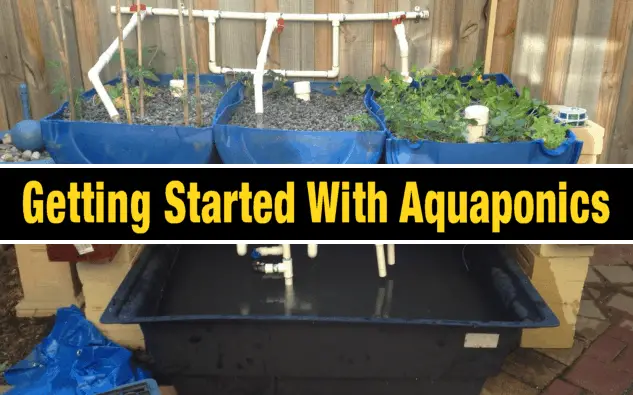
This is an article for beginners to learn how to build simple DIY aquaponics systems. It includes system plans for people that want an easy and affordable aquaponics setup.
What is Aquaponics Exactly?
Aquaponics is a mix of two words: aquaculture and hydroponics. It takes conventional aquaculture ideas of raising snails, fish, prawns, and other creatures in tanks and combines them with hydroponics, which is cultivating plants in water.
This symbiotic works well together — when properly constructed — because the hydroponic system cleans the water from the aquaculture system and cycles it back.
The two systems are designed to mitigate the downsides of each, working to complement each other. Aquaculture requires excess nutrients removed from the system, while hydroponics needs nutrients to feed the plants.
The two systems offer what the other lacks. It is an incredibly productive system, as an aquaponic system only uses about 1/10th of the water compared to growing plants from the ground.
Aquaponics is fantastic for growing food in your home. It has a low environmental impact and adds another layer of food production and independence.
It is a natural extension of “gardening” that many people find exciting and fun. You don’t need to worry about weeding or fertilizing plants.
A Brief History of Aquaponics
You might confuse aquaponics as a recent development, but it is not. In ancient times, America and Eurasia developed the concept of food production. Activities like fishing, hunting, and gardening were common practices at that time. So, it’s obvious to expect inventions like aquaponics at that time.
For centuries, fishes have been raised in the rice paddy field to provide proteins to the plants. Also, the waste from fish acts as a fertilizer that enriches the growth of the paddy field.
For instance, in Mexico, a chinampa system is used in which the fish are raised in canals. Then the platforms were made above which the plants were placed to provide them with the nutrients
However, modern aquaponic systems are introduced in the late 1970s. They have evolved over the years to the system we have now. Some of the developments are feature tanks grow that are used in an urban setting.
How Does an Aquaculture System Work?
The two main components of aquaponics are the aquaculture system and the hydroponic system. The aquaculture system lets off effluents that sit in the water.
Effluents can include uneaten feed and other wastes from the animals. The excess product slowly becomes toxic within the system, and the aquatic animals cannot handle such high effluents of the nutrients.
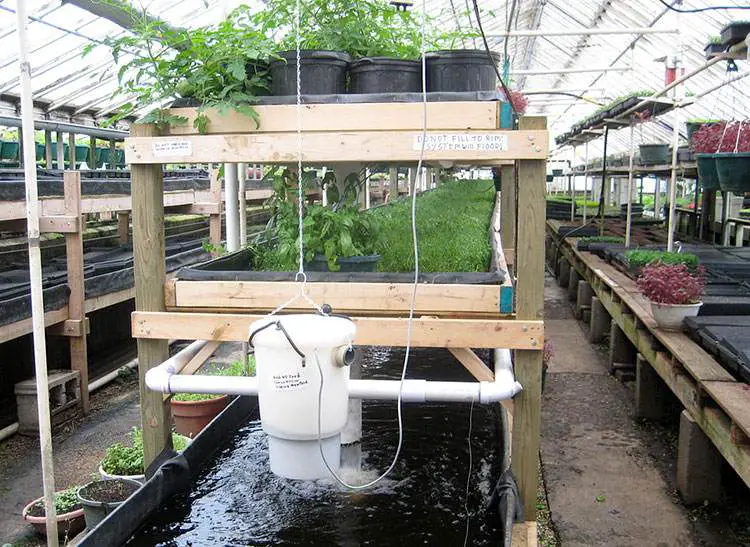
The hydroponic system is essential because plants need nutrients to grow. They filter out the ammonia that would be toxic to the animals. This continuous cycle of cleaning the water and oxygenating it enables plants and animals to grow.
Most all green vegetables can grow in a hydroponic system. However, the best plants to grow in aquaculture include Chinese cabbage, lettuce, tomatoes, bell peppers, and okra.
The most economical way to grow these is to stagger the plant harvesting as most plants have a different growth stage and will use various minerals and nutrients.
Animals that produce well in an aquaponics system include freshwater fish, crayfish, and prawns. Check your local government regulations before purchasing any fish.
Cooperative Extensions are Your Friend
One of the best things about getting started with aquaponics is the availability of quality, informed, and well-researched information for beginners.
No better place to look for this type of information than from university cooperative extensions.
They specialize in getting information of this type out to communities. Best of all – it’s entirely free!
Free Aquaculture PDFs from Universities
Some of the best resources (and one of the plans listed below) come from the North Central Regional Aquaculture Center.
Their free, downloadable PDF documents:
- An Overview of Aquaponic Systems: Aquaculture Components
- An Overview of Aquaponic Systems: Hydroponic Components
- Aquaculture Water Treatment Calculations
- Feeding Practices for Recirculating Aquaculture
- Fish Health Considerations for Recirculating Aquaculture
- Standard Operating Procedures: Feeding Practices and Feed Management
- Water Quality Management for Recirculating Aquaculture
Additional documents to help your aqua endeavors:
- A Practical Guide for Aquaponics as an Alternative Enterprise – (University of Florida IFAS Extension)
- Aquaponics: Growing Fish and Plants Together – (Colorado Aquaponics)
- Aquaponics – Integration of Hydroponics with Aquaculture (ATTRA)
- Small-Scale Lettuce Production with Hydroponics or Aquaponics – (University of Hawaii)
Free DIY Aquaponics System PDFs
Miniature Aquaponics System for Beginners
Aquaculture: Building and Caring for a Miniature Aquaponics System – This PDF from the Iowa State University Extension and Outreach is a straightforward 7-page document covering the construction of a (very) small aquaponics system.
This design is a great way to get started as it’s not a massive commitment in cost or time, and you can “get your feet wet” by starting small.
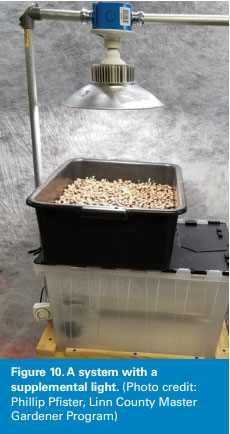
This miniature system, the document states, “can serve as a learning tool for hobbyists, educators, and potential commercial producers.”
The system here is built with readily-available and low-cost materials. It’s a simple system designed specifically for promoting the actual use of these systems by the general public.
It’s a “benchtop” system to not only produce food but to learn the basics so you can be prepared to be like a fish and “scale” up to larger, more robust systems.
Materials Needed for this System
| Required Materials | Optional Materials |
|---|---|
| 1, 12-gallon clear tote with hinged lid | Growing lamp |
| 1, black polypropylene bus tub | Light stand or hanging brackets |
| 1, 80 GPH submersible water pump | Tank stand |
| 1, indoor 24-hour outlet timer | Aquarium heater |
| 1 foot, 5/8″ O.D. PVC clear vinyl tubing | |
| 1, hydroponics fitting kit with adapter | |
| 1.5 cubic feet of clay pebbles | |
| Seeds of choice (leafy greens or herbs preferred) | |
| 5, 1-3″ goldfish (or similar fish) | |
| Fish food | |
| 10 gallons of water | |
| Water conditioner |
Constructions details are outlined in the PDF itself.
How to Build a Small Aquaponics System
Ready for the next step, or do you want to start with something more challenging? It will come at a higher cost, but your payback period could be faster if you don’t have to learn (and eventually scrap) one build to upgrade to something bigger and better.
This free PDF plan (download it) comes from the Southern Regional Aquaculture Center. This system’s design begins from the position that “many people are becoming concerned about the source of their food and would even like to grow their own food if they had the means.”
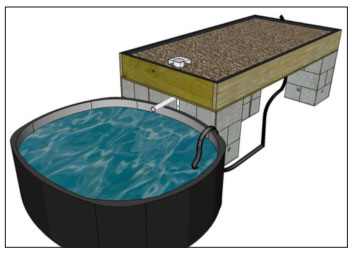
Sounds like homesteaders and preppers to me!
The materials you will need for this design will require a trip (or two) to a home improvement store. The entire material list (and required tools) is within the document itself.
This system will certainly produce significantly more food for you and your family. Still, unless you have already built a smaller system, my recommendation is, to begin with, the miniature design listed above.
Planning Your Aquaponics System
Setting up your aquaponics system is not difficult. The aquaponics system depends a lot on your personal preferences, and there is no one right way to do it. The general idea you need is a system that will work as a cycle.
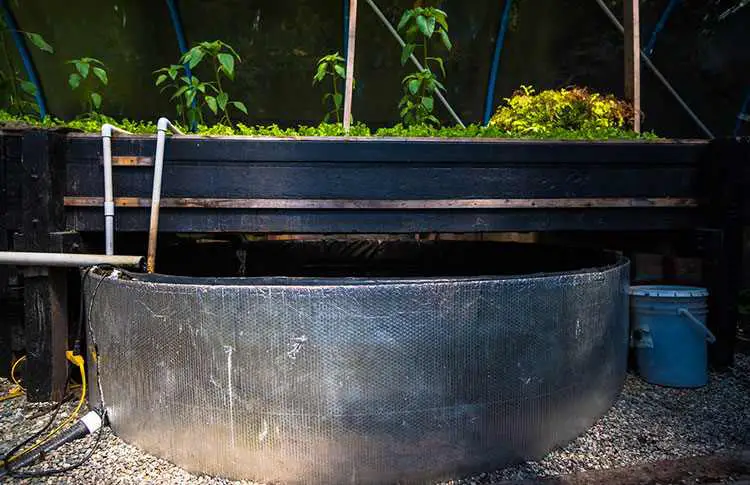
Make sure you first run the system for 24 to 48 hours before you add any fish or plants. You must fill the grow beds with either gravel or expanded clay pebbles, and the plants can be grown on floating foam rafts.
You can also use the Nutrient Film Technique for smaller plants. Once you are sure the water system is recycling itself, you can begin to bring in whatever product you plan to introduce.
Aquaponics 4 You – Quick and Easy Approach
If the plans I’ve linked to and the information I’ve provided don’t cut it, and you want a more all-in-one tutorial, consider Aquaponics 4 You. It’s not a free plan or tutorial, but for some, it might be worth the nominal fee to buy it.
The product comes with step-by-step video instructions for all of you who might learn better through visual aids, and it’s designed for beginners. It will take you from material collection through to construction and maintenance.
Check out Aquaponics 4 You as another option.
Swimming for More Information?
If you want to avoid printing off PDF documents, consider buying a book on the subject.
For some, this makes more sense as the cost of printer ink is not cheap, and having a book you can reference as time passes, makes the entire learning process easier and better suits problem-solving.
Here are some recommended titles:
- Aquaponic Design Plans and Everything You Need to Know: From Backyard to Profitable Business
- Aquaponic Gardening: A Step-by-Step Guide to Raising Vegetables and Fish Together
- Aquaponics for Profit: Earn Extra Money or Create a Successful Commercial Business
- Beginner’s Guide to Aquaponics: Step-by-Step Systems for Plants and Fish
- The Aquaponic Farmer: A Complete Guide to Building and Operating a Commercial Aquaponic System
If you have built a system of your own, we would love to hear about it in the comments below.

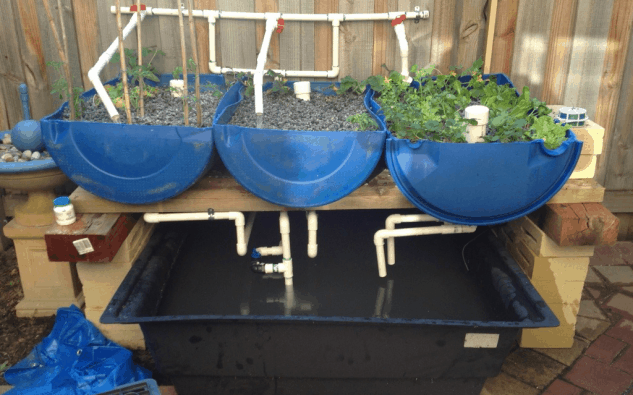
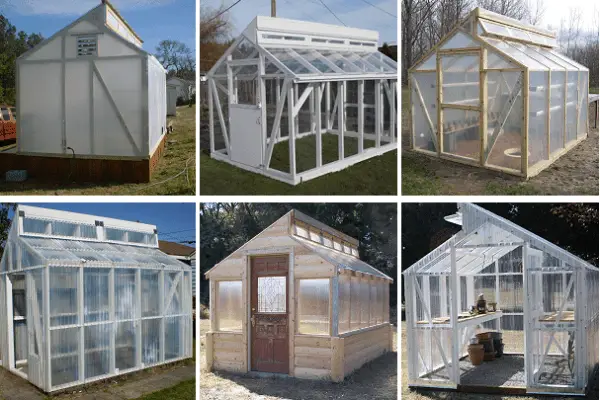
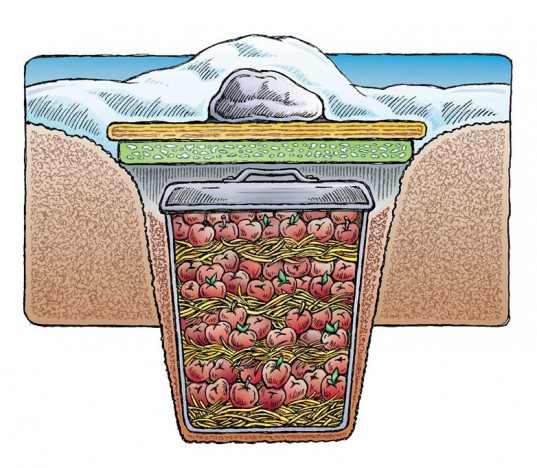




![DIY Snow Shovel [Step-By-Step Guide] DIY Snow Shovel [Step-By-Step Guide]](https://homesteadandprepper.com/wp-content/uploads/2022/07/Making-homemade-snow-shovel-150x150.jpg)
